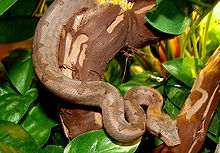User:O2906318/National Park of American Samoa

https://www.nps.gov/npsa/learn/nature/upload/mammals_reptiles_checklist-2.pdf
Like with most islands in Polynesia, the land animals can be split into 3 categories by origin: native to the island, Polynesian introductions in the early 2nd millenium, and modern (post 18th-century) introductions. The most famous animal of the park, the Samoan Flying Fox, is native to west and east Samoa. The other fruit bat, the Insular Flying Fox, occupies a wider range within Polynesia but is also native to the island. There is a third insectivorous bat that possibly became locally extinct some time after Cyclone Val in 1991, the Pacific Sheath-Tailed Bat. There are no other native mammals.
Four reptiles are known to be native to the island: the Oceanic Gecko, and three skinks: the Pacific Snake-Eyed Skink, the Micronesian Skink, and the Lawes Skink.


Three mammals were introduced with Polynesian settlement of the islands: the Polynesian Rat, the Pig, and the Dog. Cats and the three other species of rodents currently on the islands (Roof Rat, Norway Rat, and House Mouse) are all modern introductions. Among reptiles, there are 8 suspected Polynesian introductions: five skink species (White-Bellied Skink, Dark-Bellied Skink, Pacific Black Skink, Samoan Skink, and the Moth Skink), two gecko species (Pacific Slender-Toed Gecko and the Mourning Gecko), and the Pacific Boa (currently only found on Ta'u). Additionally, two species of gecko (Stump-Toed Gecko and House Gecko) are found on the islands as modern introductions. The Australosian Blindsnake and Cane Toad (the only known reptile on the islands) can be found on Tutuila (housing the most important sea and air port of American Samoa), and are also modern introductions.
